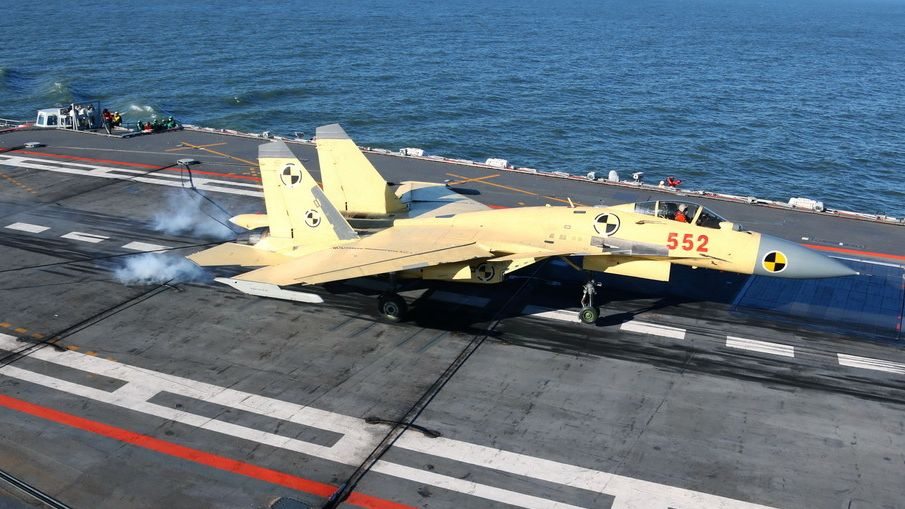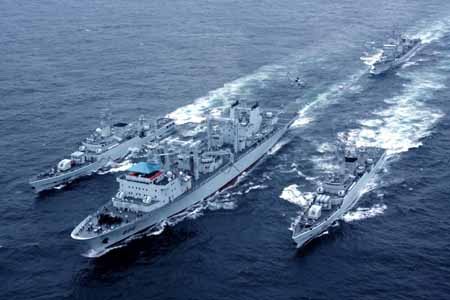The J-15 belongs to the 4th generation of conventional shipboard aircraft, which also includes the U.S. navy’s F/A-18C/D “Hornet” and F/A-18E/F “Super Hornet”, the French “Rafale M”, and the Russian Mig-29K which is also used by the Indian navy.
According to Zheng Wenhao, military expert of Xinhua News Agency, the J-15 has the best supersonic performance among the fighters mentioned above, and is especially strong in air control and air-to-air intercept; its low-altitude and low-speed performances are slightly inferior to those of the “Hornet” family, but are better than those of the other models.
With its roots in the excellent genes of the “Flanker” family, the J-15’s flight performance is relatively comprehensive. A heavy shipboard aircraft with a bare weight of about 18 tons, the J-15 is able to carry more than 9 tons of fuel internally, giving a range of over 3,000 km without the need to carry an auxiliary fuel tank. According to Zheng Wenhao, this allows it up to 12 mount points, which can all be used for a range of precision guided weapons, thereby creating high combat flexibility.
The extensive attack radius, generous bomb load, and lengthy patrol duration give the J-15 powerful single aircraft combat effectiveness.
However, according to Andrei Pinkov, chief editor of the “Kanwa Information Center”, a comparison between the “Flying Shark” on the Aircraft Carrier Liaoning and the “Super Hornet” on the aircraft carriers of the U.S. Navy indicates that the F/A-18E/F of the U.S. navy is more mature, and has certain advantages over the J-15.
“The orientation of F/A-18E/F is a fighter attacker, so that its maneuvering is not so good as the J-15, which derives from an air control fighter. This means that the J-15 is more likely to shoot down F/A-18E/F in close combat,” says Pinkov. “However, the ‘Super Hornet’ is able to take off with the assistance of catapult, so that its real payload is likely to exceed that of J-15, which takes off by means of ski-jump. Thus the U.S. fighter has advantages in terms of attack and combat radius.”
The larger frame of the J-15 also reduces the number of aircraft on the aircraft carrier, and makes its radar cross-section bigger than the “Hornet”, offering the advantages of stealth and first sight to the enemy.
“The J-15 represents a major transition in China’s Navy”, says Zheng Wenhao. As China’s first shipboard fighter, its capabilities in takeoff, landing and rapid combat-readiness are a major step forward.











